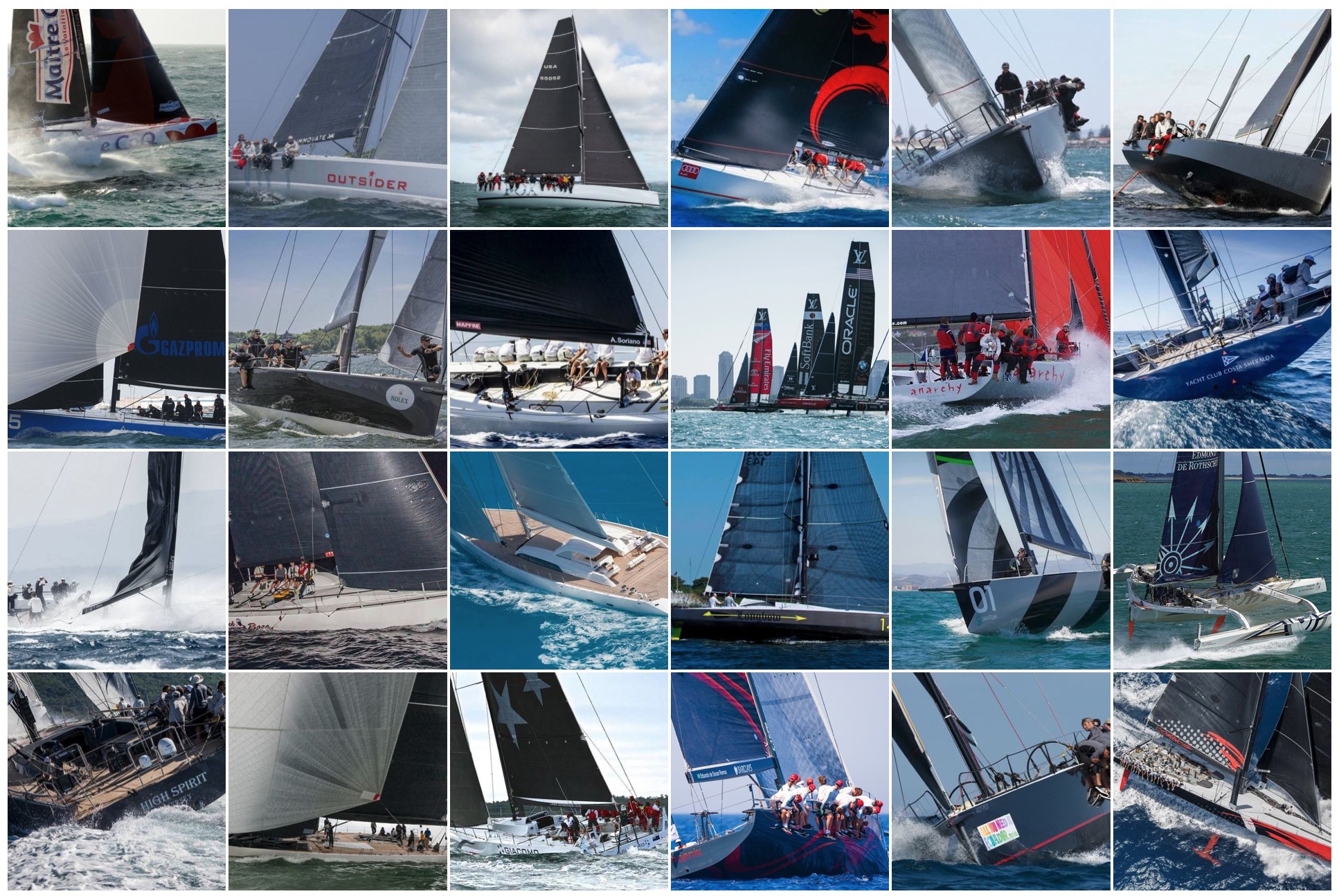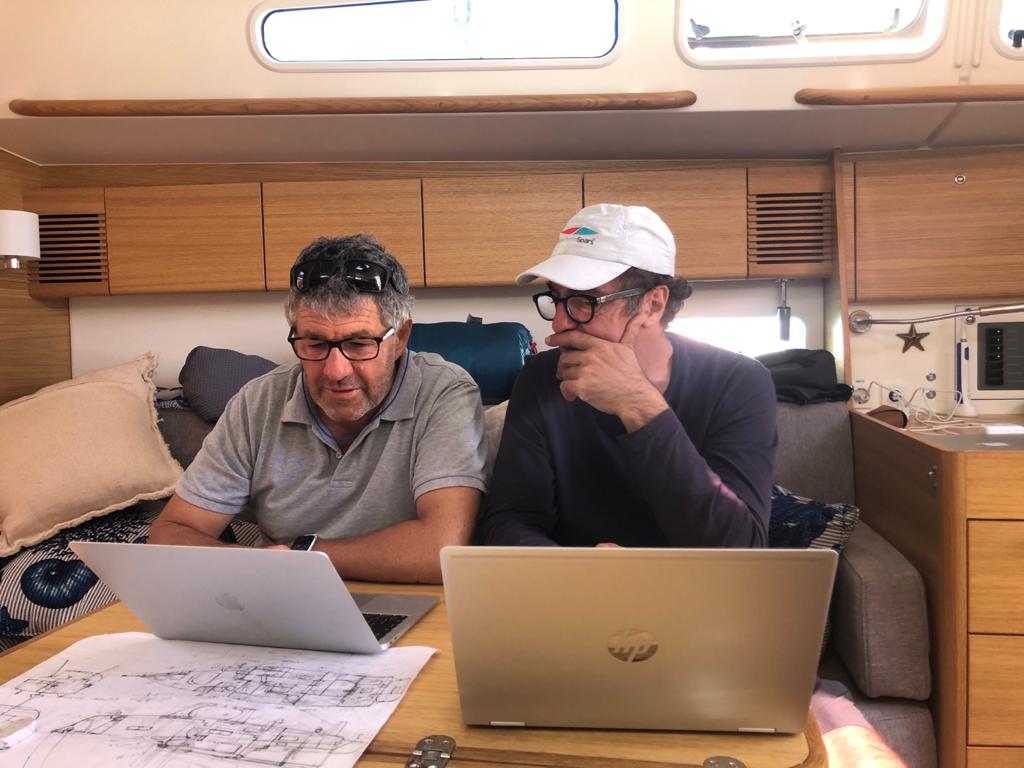Giovanni Belgrano of Pure Design and Engineering, structural engineers for several America’s Cup projects, as well as some of other most famous sailboats in the world, has talked with us about the work they did on the new First 36. How can one apply high-end technology in a production boat and other important questions are answered in a short interview below.
I’m Italian, but I came to England to study back in ’79. And I was a part of a team that founded a company called SP systems, and we set up an engineering facility specialized in composites. And all my life, I’ve pretty much done that engineering composite structures, working with designers and trying to develop structural arrangements and solutions to the project direction. So I’ve worked in a variety of fields, but my passion obviously is sailing boats.
So I’ve worked in anything from mostly high performers, anything from ocean racing yachts to day-racers, America’s Cup, large cruising yachts, rescue boats, and some industrial-type composite applications now and then. All of this work is partnered with Pure design and engineering – we are basically a team of experienced structural engineers who work on specialist projects like this one – the 36.

And sailing-wise?
Sailing-wise, sailing is a hobby for me. I mean, I used to race in my youth, but then studies and professional work took over. And for the last 20 years, I’ve been working and racing on a classic boat, which we keep here in England.
What kind of projects have you done, and which one is your favorite?
Well, I’ve done five, six America’s Cup campaigns. And they are almost like doing a PhD. You get a chance to fully, fully immerse. So you get to work with a team where you basically cannot wait to wake up to go straight to work in the morning. And those are very intense experiences. But there are also others like the first composite Maxi. To be honest, I enjoy just about anything. I just love these boats.
You mentioned the composites and other new technologies that are developed. Can you tell me a little bit more about how this changed the naval industry?
Yes, I mean, it’s interesting. I was just talking earlier with Brian Thompson, who’s world record breaker on ocean crossings. And we were discussing; when you look at my boat, which is 82 years old, you know that the designers of those days would do the same thing we are doing now if they had the same materials and technology back then.
The materials, understanding, and structural configurations allowed us to make a difference in the last 20 years. But with some of the inventions and the technology we now use, you can make things much lighter, and therefore you can do things that people would have loved to do but were impossible before.
Can this new technology be applied to the production boats, in what way?
It is not easy, but we’re getting more interest. We have three-four projects like 36, but you need to have good production to come through. Obviously, the costs involved raise the overall costs, and there is a lot of constraints within, which you must work with to make it viable. But again, it’s a matter of the companies putting together good teams as they’ve done on the 36. And we can actually work on it and make it happen.
How was working in this team?
Well, to be honest, Seascape did a great job of coordinating us. So that’s what’s happening, Matic (Lenaršić) and the guys at the yard are making the link and making sure the words all coming all the way through, so they are actually the ones putting us all together. We worked with these individuals before, with Sam and Lorenzo, so it’s very natural how the boat is coming together. But it’s all happening in Seascape.

So how much of the technology acquired on the high-end projects can be applied to production boats?
Well, we certainly use the same tools, the same engineering analysis and calculations that go into America’s cup, here on the First 36. The material is obviously different, but again, we try and pick the best possible materials to try and achieve some of the performance featured on a racing boat.
What are the benefits of this new technology for cruising? Why does speed matter?
Well, the thing is, if the boat is a pleasure to sail, you’ll be sailing more, and you’ll go out more often. When you are out there, you will be sailing most of the time, rather than motoring or motor sailing. So if a boat can start sailing in light airs, you’ll switch off the engine more often. And so, it the boat sales faster, you can get to places quicker. It will never be as convenient as a powerboat, but it will be a real pleasure while you are doing it.
How is this boat different from other cruiser-performance boats?
We are managing to hit the target weight we are aiming for, which combined with the hull shape, makes an honest performance boat. There is a lot of pretending performance boats. They say they are high performance, but they will not be a pleasure to sail if they are a ton heavier. The Firsts have always been reasonably high performance in their class, better than some other general mass-produced 30-something-foot racers. So in some ways, it’s not a massive departure from the First line. It does somehow fit in.
What kind of boats do you see as competition for these boats?
It’s interesting because I think it will be much more lively, lighter than the boats you could buy. I mean, I can think of the guys working with Arcona and X Yachts and these people, but this boat is much more dynamic. It is bridging the gap between sports boats and family cruisers. It won’t have the performance as a pure day racing sport boat, but it will come close. And the volume inside is not compromised for cruising. It’s going to be really a pleasure to sail on anything like that.
What is the most important feature of the 36 in your eyes?
I think the hull shape is quite new for a boat of this type and size. It’s going to be a very lively, exciting boat to sail. You will feel alive in the boat. So I think it’s hull shape, and to be honest, I am pretty happy with what we are doing. We’re managing to keep it pretty light. It’s going to be nice and light and rigid, much better than boats that size sold in production.
Can you describe this boat in one sentence?
Well, it’s a fresh new look; it’s a fresh new approach. So I don’t know how you would call this First 36. It’s not a sport boat because it’s not just for racing, you can happily cruise in it. One sentence? It’s a performance sailboat.
The FIRST 36 is scheduled to make her World Debut at Boot 2022 and she will make her Gulf Coast Debut in the Fall of 2022. Murray Yacht Sales has a long history with the First Series and we had the 1st Beneteau First 36.7 out sailing in the US.
#first36, #beneteau, #firstseries, #gulfcoast, #murrayyachtsales
